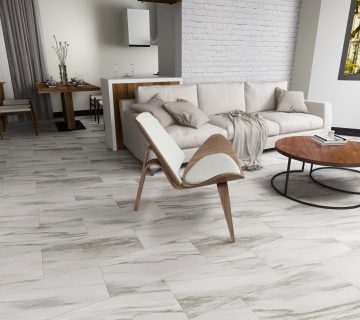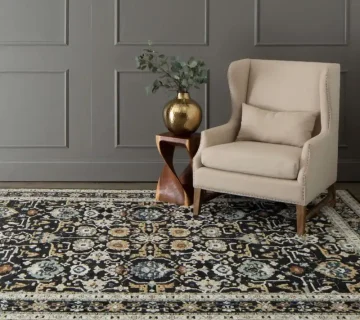Luxury Vinyl Tile (commonly known as LVT) has become the flooring industry’s fastest growing sector in the past few years. Not to be mistaken with rolls of vinyl that are often used as cheaper options for covering bathroom or kitchen floors, LVT is often mistakenly referred to as Karndean or Amtico by those more familiar with the brands than the type of flooring itself.
Today there are dozens of manufacturers offering this type of flooring, from entry-level and very affordable options from companies such as Lifestyle Floors which offers excellent value as well as robust and resilient tiles, to Polyflor who have an excellent range for domestic use and also specialise in commercial applications. Karndean, and more so Amtico, sit towards the top end of the Luxury Vinyl Tile market with some excellent products, while Moduleo is one of the fastest growing brands in the fastest growing sector of the industry.
Luxury Vinyl Tiles are available in both stone tile and wood plank effect giving the natural beauty of wood and stone flooring but without the drawbacks. LVT is warm under foot, suitable for under-floor heating; the tiles are water and wear resistant, making them ideal for kitchens and bathrooms alike. Most provide anti-slip properties, are easy to clean and require little to no maintenance. The wear layer of LVT is a general indication of quality or expected life-span starting at around 0.2mm for general domestic use up to 1mm for heavy commercial or even industrial use. Many manufacturers offer wear resistance guarantees up to 25 years.
In the past few years, technological advancements have made the manufacture of this type of flooring more eco-friendly, many companies now offer life-like texture such as the Moduleo ‘Registered Emboss’ technology which follows the knots, scars and grooves of the wood pattern to get as close to the look, feel and texture of real hardwood as possible while offering all the benefits of LVT flooring.
Luxury Vinyl Tile is light, making it easier to manoeuvre and transport for larger projects, new developments have allowed a new click system similar to laminate, while the traditional stick-down method is still favoured for some applications such as in sun-rooms and conservatories. LVT can be installed by those proficient at DIY, although a solid and smooth sub-floor is required and key to a successful and long lasting installation.
LVT in general sits between good quality laminate and real wood or stone flooring in terms of cost, however, the nature of the product means that is has various benefits over all the alternatives with very few draw-backs. An ideal flooring solution for those looking for a high quality floor that is resilient, water-resistant and easily maintained.



